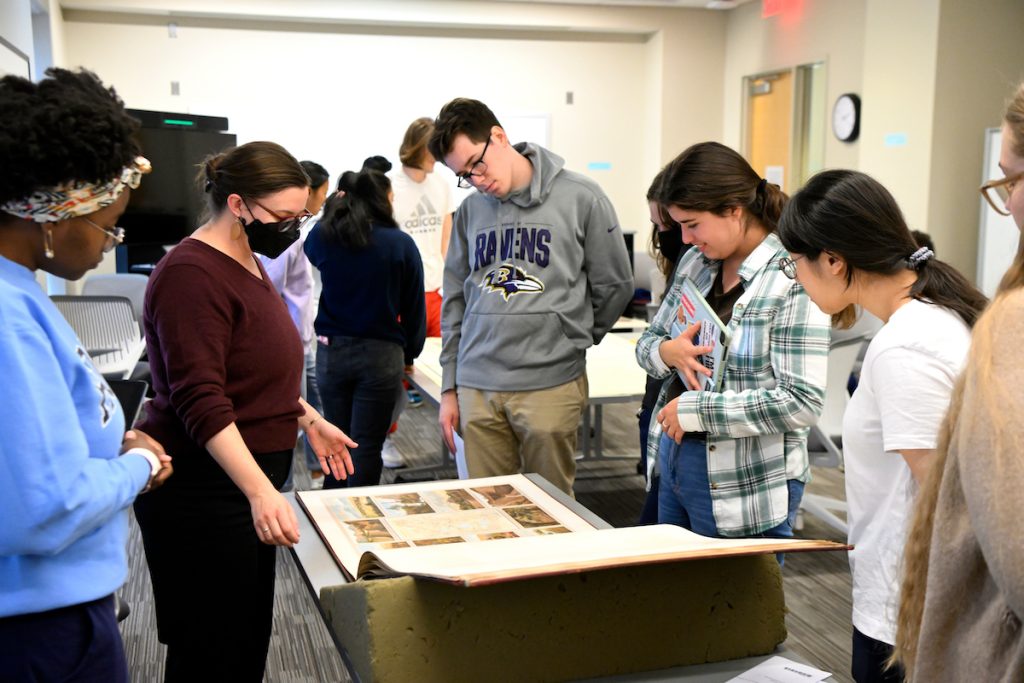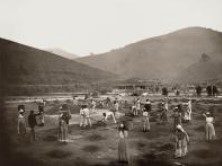
Creating Visually Rich Interactive Historical Narratives with StoryMaps
Casey Lurtz’s Modern Latin American History course introduces students to historical research methods and gives students the freedom to explore topics that interest them. Rather than accomplish these goals via a traditional research paper, Casey and graduate student Elena Palazzolo decided to re-design this survey course around StoryMaps, a user-friendly platform for building webpages that integrate text, interactive maps, images, and other media.
Originally developed as a tool for creating spatial narratives featuring ArcGIS software, StoryMaps also provides a way for students to construct original analyses of varied sources. The platform enables students to highlight and comment on specific elements of a source, make connections between sources, and compose multi-modal arguments (integrating text, images, and other media) for audiences beyond the classroom. Students leave the course with professional-looking web pages they can show off to friends, family, and even potential employers.
Examples of student Storymaps
Introducing a New Digital Tool
Today’s college students may be “digital natives,” but they still need guidance and structure when learning new digital tools. The course meets these needs by providing a template StoryMap that each student can copy and edit. In the first half of the semester, students use the template to gain practice with StoryMaps’ different design features, such as “Sliders,” which enable side-by-side comparisons of related images, and “Sidecars,” which highlight specific parts of a featured source. Modules walk students through construction of feature step by step. This sets them up to build their own StoryMaps, selecting the design features that are best suited to their arguments, in the second half of the semester.
While StoryMaps is a fairly intuitive platform, students need time and practice to become comfortable with any new tool. One revision the instructors made the second time they taught the class is geared towards limiting the number of new variables in play at once. Rather than teaching students to identify digitized primary and secondary sources at the same time they were learning the StoryMaps platform, students are now provided with pools of sources to choose from.
Building Rhetorical Awareness
Several features of the course help build students’ rhetorical awareness. Weekly readings and short answer questions prompt students to think about the affordances of different features within StoryMaps (e.g., “What are some of the tradeoffs of choosing a slideshow or a sidecar? How do the different forms impact the flow of and interaction with the information that the StoryMap shares?”). By analyzing sample StoryMaps, students consider how different design choices impact their experience engaging with the material and are prepared to make thoughtful choices when constructing their final projects.
The final (including rubric) asks students to specify an audience for the topic they have been exploring, and to write in prose that will appeal to that audience. Suggestions include a digital exhibition for the Museum of Modern Latin American History; a Fulbright proposal to travel abroad and complete research to be evaluated by scholars in the field; and a presentation to a relevant community organization about the contemporary resonances of the historical topic. In every case, they are asked to make their webpages accessible to individuals with different abilities. The midterm (including rubric) helps prepare students for the final by asking them to connect their chosen topic to broader historical concerns (either the rise of the nation-state or ideas and practices of citizenship), as well providing more practice with specific StoryMap features.
A Guide and Template for Using StoryMaps in Your Class
Casey and Elena have generously created an in-depth guide to teaching with StoryMaps. The guide includes a StoryMap template for other instructors to adapt and share with students, many more materials from their course, and other StoryMaps resources for students and instructors. If you need one more incentive to give it a try, consider this: Casey reports that since switching from essays to StoryMaps, grading has become a lot more fun!


